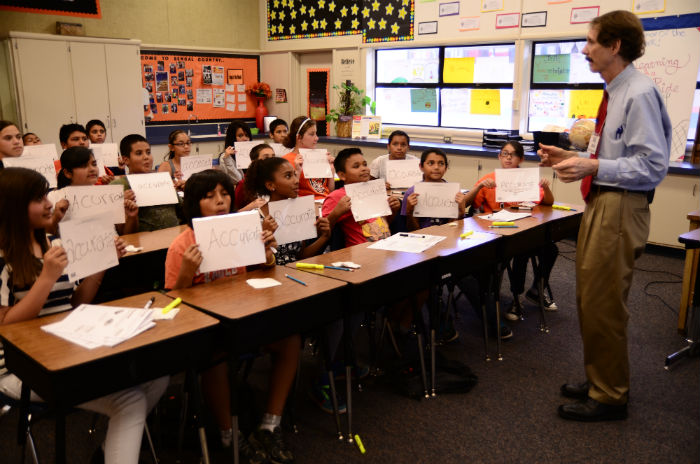What is Checking for Understanding?
Checking for Understanding (CFU) is the backbone of effective instruction. Checking for Understanding is the teacher continually verifying that students are learning what is being taught while it is being taught. CFU provides the teacher the opportunity to improve learning based on student responses throughout the teaching and learning process. Using CFU in “real-time” allows teachers to make crucial instructional decisions as necessary (like re-teaching) during lesson delivery.
Research behind Checking for Understanding
According to the article Principles of Instruction: Research-Based Strategies that All Teachers Should Know by emeritus professor of education Barak Rosenshine (American Educator, Spring 2012, effective instruction asks questions and checks responses of all students in order to help students practice new information and connect new material to their prior knowledge.
The article suggests that to practice new information, teachers must ask students questions while they are teaching. In a classroom-based experiment, a group of teachers was asked to increase the number of factual questions and process questions during guided practice. The results of this experiment showed that students who had these teachers achieved higher scores than students whose teachers did not ask multiple questions. Also, teachers who asked a large number of questions had higher student participation. Furthermore, teachers were able to assess if the students understood the content, which allowed the teachers to make modifications of the lesson or reteach when necessary.
Rosenshine observed that successful teachers found ways to involve all students in answering questions. Examples include having all students:
- Tell the answer to a neighbor
- Summarize the main idea in one or two sentences, writing the summary on a piece of paper and sharing this with a neighbor
- Writing an answer on a card and then holding it up
- Raising their hands if they agree with the answer that someone else has given
The National Research Council recommends implementing formative (on-going) assessments such as checking for understanding in order to improve instruction. The National Research Council frames such assessment as the process of teaching scientifically:
Teachers collect information about students’ understanding almost continuously, and make adjustments to their teaching on the basis of their interpretation of that information. They observe critical incidents in the classroom, formulate hypotheses about the causes of those incidents, question students to test their hypotheses, interpret students’ responses, and adjust their teaching plans.
Why is Checking for Understanding so beneficial?
Using research-based strategies, the DataWORKS Explicit Direct Instruction model incorporates Checking for Understanding during a lesson because:
- It allows the teacher to make instructional decisions during the lesson. It informs the teacher when to speed up, slow down, or re-teach. CFU helps pace the lesson.
- When teachers look at independent work, homework, quizzes, or state test results to see if students learned…it’s too late to modify instruction.
- CFU is the back bone of effective instruction and Explicit Direct Instruction… because you measure and monitor student learning in real time.
- CFU guarantees high student success (80-100%)… because you revise teaching in direct response to student learning.
- CFU ensures that your students will not be practicing and reinforcingtheirmistakes. Practice makes permanent, not perfect!
Citations
Barak Rosenshine, Principles of Instruction: Research-Based Strategies that All Teachers Should Know




